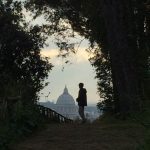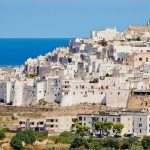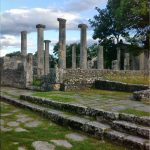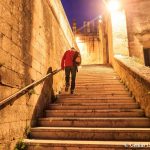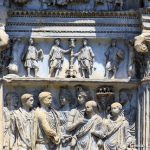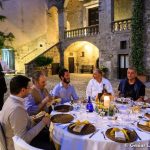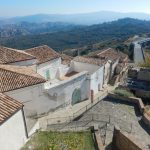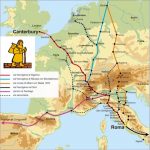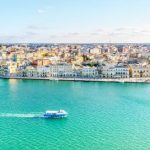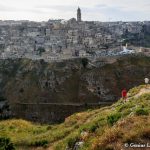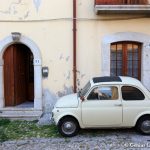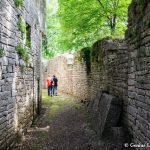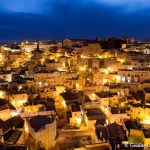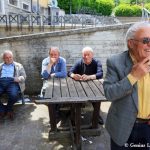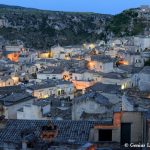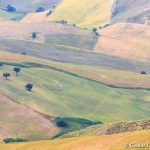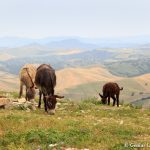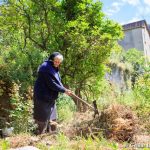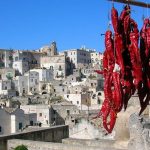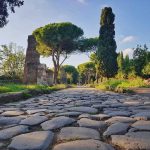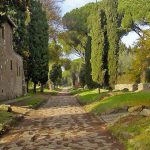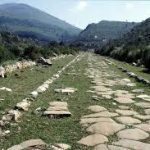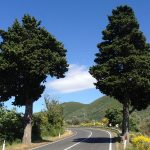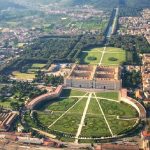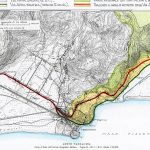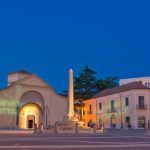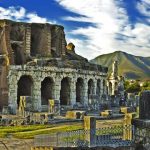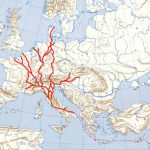The Via Appia & the 'Vie Francigene' of southern Italy
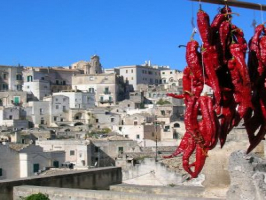 |
|
||||||||||||||||||||||
The Via Appia and the ‘Via Francigene’ in southern Italy
From Rome to the Holy Land – walking through the authentic southern Italy
In the Middle Ages there were several pilgrim’s roads, generally called ‘Francigena’ or ‘Romea’, which led from the northern European countries to Rome, the Holy City, the place where most medieval pilgrims were heading for, to visit the places the martyrdom of St. Peter and St. Paul.
But part of the pilgrims, during medieval times (and also later) travelled on to the ‘Holy Land’. Therefore, their route continued along the so-called ‘Vie Francigene’ of southern Italy, a series of routes from Rome to south-eastern Italy, mostly towards the port of Brindisi, where they could embark for the Holy Land. The Via Francigena therefore does not end in Rome.
Of course the pilgrims used mostly the roads which were already there: the Roman roads such as the Via Cassia, which leads from the North to Rome, and then to get to the ‘Holy Land’ the Via Appia (Antica), and the Via Appia Traiana, the roads which follow the most obvious passes and the most ‘logical’ route from Rome to Brindisi and which were in place already since a 1000 years at the time of the pilgrimages.
Other routes used by the pilgrims refer to the Holy Emperor Frederick II, who has lived a big part of his life in this area, and to the cult of St. Michael, which has its main temple in the mountains of the Gargano Promontory. Therefore, even more than in northern Italy there is not such a thing as one ‘Via Francigena’, there are many different possible routes. For this reason most people refer to the ‘Vie Francigene’ (which is the plural form in Italian), rather than ‘the’ Via Francigena.
Walking the original route or a full immersion in local landscape & culture?
As written, the old Roman roads obviously followed the most ‘logical’ route, and the easiest passages. And that is basically the main problem with the ‘original routes’: often the roads have been further transformed over the centuries, and are nowadays major roads of national importance (‘strade statali’), often even 4-lane highways.
For that reason, also for our southern ‘Francigena Routes’, we have selected only the ‘best parts’, or to state it correctly: the ‘walkable parts’ of the Via Appia/Vie Francigene nel Sud. Where necessary we deviate from the ‘official‘ route of the Via Francigena. This way we can take in a number of absolute highlights of southern Italy, places you must see once in a lifetime, but which often are relatively unknown.
With us you can walk from Rome to Formia, mostly along the Via Appia (but taking in also some beautiful hikes in the Lepini Mountains, as well as the Circeo), from Formia to Benevento, the capital of the beautiful Sannio region (perhaps taking in Caserta, the Versailles of southern Italy and other bits of the ancient Vaia Appia), and through the hills of southern Italy all the way from Benevento to Bari. Then, acoording to your interest, either along the coast, or slighty more inland, stopping in several charming villages, the last stretch will bring you from Bari to Brindisi. And if you wish, you can even continue to the very point of the Italian Peninsula, the Finis Terrae of Santa Maria di Leuca.
We will let you enjoy the pleasure of walking a pilgrim’s route, but also to relive the experience of the medieval pilgrims, walking through forests and pleasant agricultural landscapes, from abbey to abbey, from village to village, but without the noise of modern traffic!
The first part of the Via Appia, the part closest to Rome is the most famous (and part of a Regional Park), but also further South this road can still be walked! This is perhaps the area where the intriguing history of the area comes most alive. Here, more than ‘only’ walking over a medieval pilgrim’s route you’ll walk through the heartland of the Romans, from Rome into the Campania Felix, an area which flourished at the time of the Roman Empire. This area, boast some of the most impressive amphitheatres and other public buildings, as well as long stretches where the Roman pavement can still be seen.
Then you’ll walk into the ‘Sannio’, the heartland of the Samnites, a pre-Roman population, to arrive at benevento, its capital, and a beautiful, yet underrated, city. From here you either continue towards Puglia along the Via Appia Traiana (or Francigena nel Sud) or along the ‘original’ Via Appia into Lucania, or Basilicata, where you can admire the various layers of history: from the ancient pre-Roman tribes, to the castles of Frederick II and the later Spanish domination. Of course you’ll then visit Matera, one of the most intriguing cities in Italy.
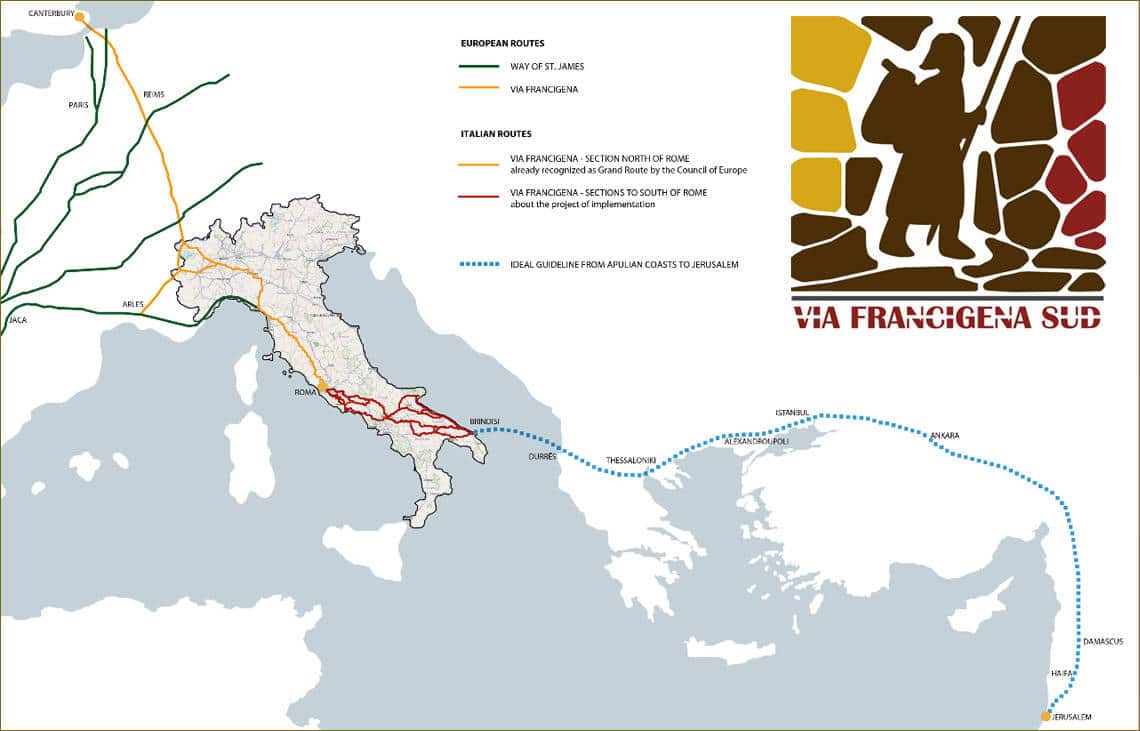
We can offer several different routes – also by bike. Please contact us to know about the actual possibilities.
Although the tours can be adapted to your fitness – generally speaking these are moderately challenging tours, which are suitable only for experienced walkers with a good general physical condition and with good orientation / map reading skills.
The route roughly follows the traces of the Roman Via Appia and the southern Via Francigena, one of Europe’s most important ‘highways’ in medieval times. You will walk from village to village, most virtually unknown, and definitely off the beaten ‘tourist track’, a full immersion in the real ‘Mezzogiorno’, the authentic ‘Deep South’ of Italy.
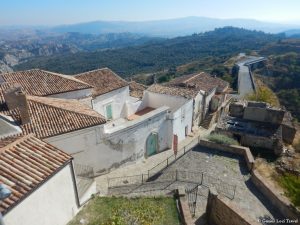 |
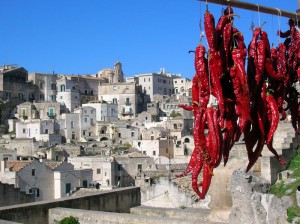 |
Programmes
We can ‘personalise your route, according to your interests and time available. From Rome to Formia – and from Formia to Benevento, the Via Appia and Via Francigena del Sud travel close together. After Benevento the go different ways. Although there is already a kind of ‘official’ route of the Via Francigena del Sud (although not yet as well defined as the route to Rome) – with a designated number of stops along the road, but also here we will be able to ‘personalise your route.
The route can be divided into several stages:
The first part from Rome to Formia (11 days) is mostly along – or close to – the Via Appia, leading from the heart of Rome, along the Colli Albani and Lepini Mountains down to the coast in southern Lazio.
For the second part of the journey, from Formia to Benevento (11 days) different routes are possible: one follows the ‘official’ route of the southern Via Francigena (with a possible deviation), while another route follows the Via Appia closely, through Capua, Capua Vetere and Caserta. A detour through the Taburno Mountains is possible.
After Benevento the ‘official route’ of the Via Francigena bends to the northeast, in the direction of the Sanctuary of St. Michael’s in the Gargano. This route stays close to the Via Traiana (or Via Appia Traiana), which was constructed in 109 AD by Emperor Trajan at his own expense, during a period of relative peace, as a shorter route to Brindisi. Also our tour, from Benevento to Bari follows roughly the Via Traiana through the mountains of eastern Campania, to the beautiful city of Troia in Puglia. Then, along a series of nice small town it reaches Bari.
The last part of the ‘full’ southern Via Francigena tour is the stretch from Bari to Brindisi, which roughly follows the coast, and touches some nice coastal towns such as Monopoli and Polignano, but our tour (not the official one) brings you as well along some stunningly beautiful inland villages, such as Ostuni, from where it continues along the coast to Brindisi.
But perhaps ‘our’ preferred route, closer to the ‘original’ Via Appia, continues in southeastern direction! This stunning route brings you through the real heart of southern Italy, eastern Irpinia & northern Basilicata. It brings you along stunning Venosa (Venusia) and the volcanic lakes of Mt. Vulture to Matera, one of the most extraordinary cities on Earth. You’ll walk through timeless landscapes and villages where time has stood still, admiring remains and monuments of the Greek, Roman and medieval civilisations, which all passed here and left their traces.
This part of the route can be divided in two sections of about a week each: from Benevento to Melfi/Venosa, and from Venosa to Matera (different routes possible – please contact us). The last part of your route brings you from Matera to Brindisi. Also on this last stage there are several possible routes, extra loops, shorter and longer options. Of course you could opt to follow the original Via Appia, which here was the real military highroad that connected Venusia to Taranto (Tarentum), an important military harbour.
However, if your main interest is not only the Roman road, but above all the enjoyment of the landscapes & its people, we would recommend to follow the ‘Via Ellenica’ (the ‘Greek Route’), which gives you also the opportunity to explore the beautiful area of the Val d’Itria, with its famous ‘trulli’ dwellings.
At Brindisi the Via Appia, and with it the Via Francigena ends, from here the Romans would sail to the East, and the medieval pilgrims would embark for the Holy Land: “Apulia, cujus metropolis est Brundiston, per istam navigatur in terram sanctam”.
However, if you would like to walk to the real ‘end’ of Italy, you can continue in southeastern direction all the way down to Santa Maria di Leuca, the Finis Terrae of southeastern Italy.
Please contact us to know about the actual possibilities.
ACCOMMODATION & MEALS
Although not in all places along the route there is a lot of choice in accommodations, we have selected the best, characteristic family-run hotels and Bed&Breakfasts (generally 2/3-star level; 4/5-star on request) as well as a number of beautiful agriturismo’s. All rooms have always en-suite facilities – no dormitory style rooms!
On most nights you will be free to make your own dinner arrangements. Usually your accommodation holder can give you good tips. Only in a few isolated places, with no restaurants or on those occasions where your accommodation holder actually also manages the best restaurant, we have booked halfboard.
No picnic lunches are included in the tour price, but these can be prepared for you by the accommodation holders, or materials for picnics can be purchased in the villages where you’ll be staying. On some occasions you have the option to have your lunch in a restaurant along the way.
UPGRADE/CHANGES IN ACCOMMODATION
It is (possible to upgrade this tour (on limited occasions), staying in more luxurious 4-star hotels (where available).
LEVEL OF DIFFICULTY
Moderate (3): Mostly moderate walks, with some long stages, involving some steep uphill walking, sometimes on paths with rough surfaces. On some days extensions or shortcuts are possible.
Fitness: High standard of fitness is necessary: you should be able to walk for up to 7 hours a day in the hot sun on dusty or stony tracks.
N.B. During summer the difficulty of this tour definitely increases due to the heat. We therefore advise against booking this tour during the period between about 14th July and 20th August.
FOOT PATHS & WAYMARKING
Most paths are relatively well maintained; you’ll follow most of the time the official route of the Via Francigena, well maintained in some places, a bit less in others. A large part of the route goes along so-called strade bianche (unsurfaced roads), easy to follow and very unlikely to get overgrown (we continuously check our routes – please help us by providing your feedback on the quality of the paths).
Waymarking: A large part of the route is waymarked (to a varying degree) with the signage of the ‘Via Francigena’, but on some occasions we have found more interesting routes than those actually waymarked; therefore you should follow the route descriptions provided together with the maps. With these you will always be able to find your route.
PRICING
Please refer to the tour of your choice, for an indicative pricing (for our ‘standard’ tours). Customised itineraries can be developed, according to your available time and fitness.
INCLUSIONS
- overnight stays
- Luggage transport from hotel to hotel (on request)
- Extensive route notes, with description of the route & tourist information
- Maps (mostly at 1 : 25.000 scale)
- 24/7 assistance
- Pilgrim’s Passport (‘Credenziale’)
ARRIVAL & DEPARTURE
Arrival: The tour starts in ROMA – the Eternal City. A frequent train service can bring you to the nearby international airport. There are frequent trains to all other cities in Italy.



















